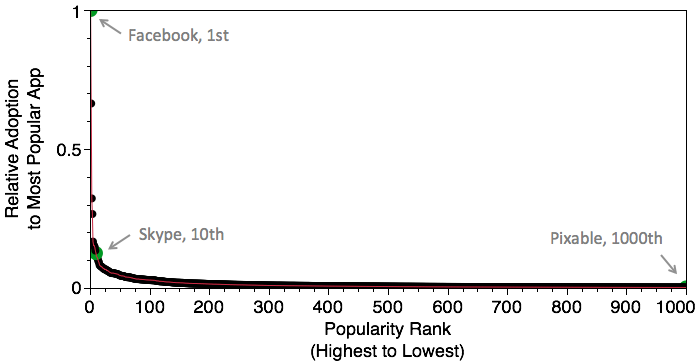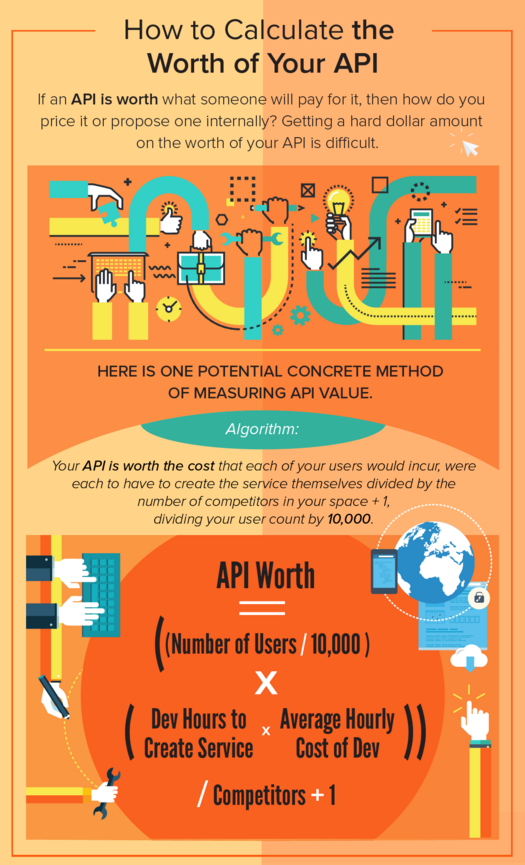Sections
In Search of a European Google
[avatar user=”malm” size=”small” align=”left” link=”file” /]
Recent evidence clearly points to Europe sliding into ‘digital recession’ relative to the US and Asia. Echoing the concern over falling behind, this Guardian post explores a variety of reasons why the chances of Europe creating a technology platform company to rival the giants of Silicon Valley like Facebook and Google are arguably slim to none:
The combined value of the top three internet companies in the Americas – so, basically, in America – is around $0.75tn (£0.5tn). In Asia, it’s around $0.5tn. In Africa, it’s $50bn. And in Europe, it’s just $25bn. … when you look at the top of the tech market, the very top, Europe is lagging a long way behind.
The reason the topic is important is because the large platform players like the GAFA quartet will increasingly become the gatekeepers of future tech power and scale employment prospects:
“This is as big a deal as the industrial revolution. You’re moving from the agrarian to the industrial to the digital age, and you’re seeing the digitisation of everything. Industries which weren’t considered to be digital are being transformed by some of the methodologies and the processes of the digital age. Take Tesla – we think of Tesla as being a ‘startup’, but it’s the same size as Audi.” Both companies are valued at around $30bn. …
If you’re engaged on any aspect of software technology in the UK within a wider global supply chain (which is pretty much everything), the visceral sense of being overtaken is something you are likely to have experienced at first hand in the work environment. It’s a dramatic volte face from as little as ten years ago when Nokia and Symbian were in their pomp and the US seemed a distant second in mobile technology terms. Ten years on mobile now looks like a closed book – a digital Mount Rushmore with the 4 presidents replaced by Google, Amazon, Facebook and Apple. Perhaps the Internet of Things will offer a chance for Europe to strike back.
Manufacturers and Devices
- Wired on how the global smartphone market is slowing as China reaches saturation and why that represents great news for Apple who look to reap the benefit with their iPhone Upgrade program.
- Probably just as well they’re not relying on the Apple Smart Battery Case, “a $99 (£79) add-on for the iPhone 6 and 6s that packs an extra 1,877mAh battery into a… curious-looking silicone frame“. The Verge panned its “unapologetically bad” design.
- Firefox OS phones are reportedly “dead” as parent Mozilla pivots the platform to focus on IoT use cases. There hasn’t been any update to the wiki covering the release schedule for the next ‘Red Square’ release for six weeks. It’s third time unlucky for Mozilla exec Ari Jaaksi who experienced the same feeling at Nokia with Meego and then HP with webOS. It’s not clear the platform will thrive in the IoT space since it doesn’t come with a built-in cloud and analytics proposition for developers:
The biggest problem for the operating system was a lack of developer support. Faced with having to develop for a third (or fourth if Windows Mobile was on the cards too) operating system didn’t appeal to most time-strapped developers, and the range of apps out there was tiny in comparison to the competition.
Apps and Services
- App developers have plenty enough problems without even thinking about another platform as a combination of discovery favouring the discovered and barriers to adoption conspiring to produce a brutal Matthew Effect starkly conveyed by this graph:
The app ecosystem has an extremely harsh power law where app adoption and monetization are heavily skewed towards the top few apps. It’s nowhere near 80/20. In fact, it appears to be more like 99% of the value is centralized to the top 0.01%. Let’s call it the app store 99/0.01 rule.
- One of the main beneficiaries of the Matthew Effect is WeChat who already have 650 million monthly active users and are now reportedly expanding their QR-code mediated WeChat Pay payments system overseas targeting Chinese tourists. TechInAsia meanwhile published a neat infographic highlighting just some of the bewildering range of ways WeChat is being used in China and affording less and less space for differentiation outside its all-encompassing reach.

- And yet still they come, the would-be app contenders. One startup seeking to help them get off the ground even more easily and disintermediate developers altogether is AI-app proposition Gigster who just received $10m in funding from Andreesen Horowitz. They look well worth keeping an eye on:
The company finds top-notch freelance developers, designers, and project managers with pedigrees from MIT, CalTech, Google, and Stripe, and only accepts 5% of applicants. A sales engineer discusses proposals with clients, and using the AI engine, comes back with a price quote and production schedule in about 10 minutes. Then Gigster manages the entire development process through delivery of the fully-functional app.

- Engadget on how the BBC are experimenting with personalized video:
For this “visual perceptive media” project, the BBC developed a mobile app that analyzes music listening habits and asks questions about users’ personalities. Paired with age and gender info, the resulting personal profile automatically tailors the short film to the perceived preferences of the viewer.
Digital Disruption and Cloud
- Great VisionMobile presentation on how digital is “crushing industry boundaries“ with a particular focus on ‘asymmetric business models’ which force “customers and profits to migrate from one industry into another“:
- It’s been covered before but the smartphone really is eating television and the trend is even more pronounced with millennials and tweens:

- GigaOM reporting on Atlassian, Slack and the irresistible rise of corporate “chatops”.
- Couple of good related ContentLoop pieces covering how to explain APIs to your CEO and why the API economy is exploding. The former contains a link to some really useful infographics like this one on how to quantify the worth of your API:
Big Data
- Advice from Bob Rogers, Intel’s Chief Data Scientist on how to build a data science team. The key is to focus on complementary skillsets not unicorns.
Security
- The potential security and privacy concerns raised by the Hello Barbie smart doll was highlighted in the blog a few weeks ago. These now appear to have been realised based on this WashPo latest update:
researchers say that they discovered that the app contained a number of security problems, including that digital certificates, which are supposed to confirm the legitimacy of the connection between the doll and the app, used a “hardcoded” password. Every app used the same password as part of this verification process
- All the more reason to jump on the Let’s Encrypt TLS certificate bandwagon.
- Good LinkedIn post on the different types of security penetration testing written by Ben Downton who works for UK-based specialists MWR.

- Meanwhile this InfoQ presentation outlines what AI-based security attacks are and why they represent the “new frontline”. Botnets are a particular focus:

- Entertaining and fascinating Hackaday post profiling the other life of Leon Theremin famous for inventing the eponymous musical instrument but less well known as “creator of one of the most successful clandestine listening devices ever used against the American government.” which lay undetected for seven years within a Seal gifted to the US by the Soviet Union in 1945:

The Internet of Things and Wearables
- The IoT TechExpo taking place in London Olympia over two days in Feb 2016 looks interesting if you’re into this area.
- IoT rights and permissions are viewed from the controversial perspective of Digital Rights Management (DRM) by this correspondent:
“an additional Blockchain component, for irrefutable trust and ID management, might provide equivalent DRM-like governance for IoT, and I see this as a natural evolution of DRM (or whatever you want to call it) for both ‘things’ and content.”
- Intel piece on how to choose cloud services for your IoT project. They of course would direct you to their Bluemix platform built on their SoftLayer hosting acquisition. But this advice is spot on:
As IoT develops, SaaS will play an increasing role. Currently things like email, remote or virtual desktops, and CRM type tools occupy this category. Think Salesforce* or Google* apps and you have the right idea for SaaS. If you are looking for special functionality outside of your physical hardware, look to a SaaS type solution to fill this type of gap.
- The Pine64 is a $15 64-bit Raspberry Pi competitor powered by an ARM v8 Cortex-A53 chip. It’s available via Kickstarter:
- CNN ask whether smart guns are an answer to the mass shooting epidemic given the US doesn’t seem likely to reform gun law any time soon.
- The Verge review Tag Heuer’s Carrera Connected smartwatch and find much to admire:
it just takes one look at the Carrera Connected to see how it is different than a Motorola or Samsung or Apple or what have you. It, well, looks like a watch. Specifically, it looks like a Tag Heuer watch, with its imposing size, angular edges, and bezel full of numeric markings.
- The product has been something of a sleeper hit which will generate hugely impressive revenue for Tag given it retails at $1500:
Retailers and various other resellers have requested a total of 100,000 units of the watch, which is way more than what the company expected upon announcement…
/cdn0.vox-cdn.com/uploads/chorus_asset/file/4324141/Tag_Heur-45D7-smart_watch-04.0.jpg)
Artificial Intelligence and Machine Learning
- Google has launched its Cloud Vision API as a limited beta building upon the release of its TensorFlow Machine Learning platform. It comes with a neat Raspberry Pi based technology demonstrator:
To show a simple example of the Vision API, we have built a fun Raspberry Pi based platform with just a few hundreds of lines of Python code, calling the Vision API. Our demo robot can roam and identify objects, including smiling faces. This is just one simple example of what can be done with Cloud Vision API
- Long Atlantic piece on driverless cars and why they are shaping up to be the early 21st century equivalent of the 1960’s Space Race with Google, Apple, Uber and Tesla duking it out for supremacy in a multi-way high stakes shootout with Detroit-based car giants:
If fully self-driving cars reach the market, it’ll be in the world that smartphones made possible; a world of GPS-enabled maps, voice-controlled robot assistants, constant connectivity, and everything on-demand. And the leading players—Apple, Google, and Uber—are all vying for leadership in a new sector of this world, which they created. They know what it’s like to demolish the incumbent in an industry because they’ve all done it before.
- First in a fascinating 4-part series of posts from Bob L. Sturm on the use of Recurrent Neural Network (RNN) based Deep Learning to “assist the process of music creation“. His posts explore the results gained from a model trained on 23,000 Irish folk tunes. Bob will be playing the music live tonight at Dorkbot in East London.

Innovation and Trends
- As we approach year end, posts offering free predictions for 2016 inevitably appear on the horizon. This HBR post predicts that “Algorithmic personality detection” and “bots” like Xiaolce will both be big.
Microsoft’s experimental Mandarin-language bot, Xiaolce, is akin to Samantha in Her. She lives inside a smartphone and has intimate conversations with her users, because the program is able to remember details from previous conversations. She also mines the Chinese internet for human conversations in order to synthesize chat sessions.
- This ContentLoop post explores how social media will explode into the Enterprise in 2016 off the back of the likes of Slack and this one suggests that the gig economy will go mainstream and includes a prediction that Powerpoint will be disrupted by the likes of Prezi and Keynote:
Companies are increasingly looking for new, dynamic ways to create and deliver corporate presentations, and PowerPoint just isn’t cutting it in the business world, says Pearson. Dynamic presentations with superior graphics and animation and the ability to be interactive is all the rage.
- The difference between the old and new sales model:

Software Engineering
- Swift is already hugely popular on Github just a week after launch.
- IBM meanwhile have:
‘launched a Web-based Swift sandbox where you can write code and execute it in a Linux server environment. It lets you view your source code and results side-by-side, along with error messages in the output area.

Work and Management
- Talking about and raising explicit awareness of bias may actually be counterproductive:
“new research suggests that if we’re not careful, making people aware of bias can backfire, leading them to discriminate more rather than less.”
Remember that creative problems are supposed to feel difficult. Most involve setbacks, failures, and that “stuck” feeling. It’s part of the process. Suppress your instinct to interpret these feelings as a signal that you just aren’t creative or that you’ve run out of good ideas. Reaching your creative potential often takes time, and persistence is critical for seeing a challenge through to the end.
Culture and Society
- How the legendary Casio MT40 keyboard released in 1981 kick-started reggae’s digital revolution.
- Smartphones and walker distraction.
- The New Yorker confessional piece details how American-Bengali author Jhumpa Lahiri learnt Italian then went to live in the country and eventually to write exclusively in the language. It’s called Teach Yourself Italian and appropriately enough it’s translated from the language too:
One could say that the mechanism of metamorphosis is the only element of life that never changes. The journey of every individual, every country, every historical epoch—of the entire universe and all it contains—is nothing but a series of changes, at times subtle, at times deep, without which we would stand still. The moments of transition, in which something changes, constitute the backbone of all of us. Whether they are a salvation or a loss, they are moments that we tend to remember. They give a structure to our existence. Almost all the rest is oblivion.




